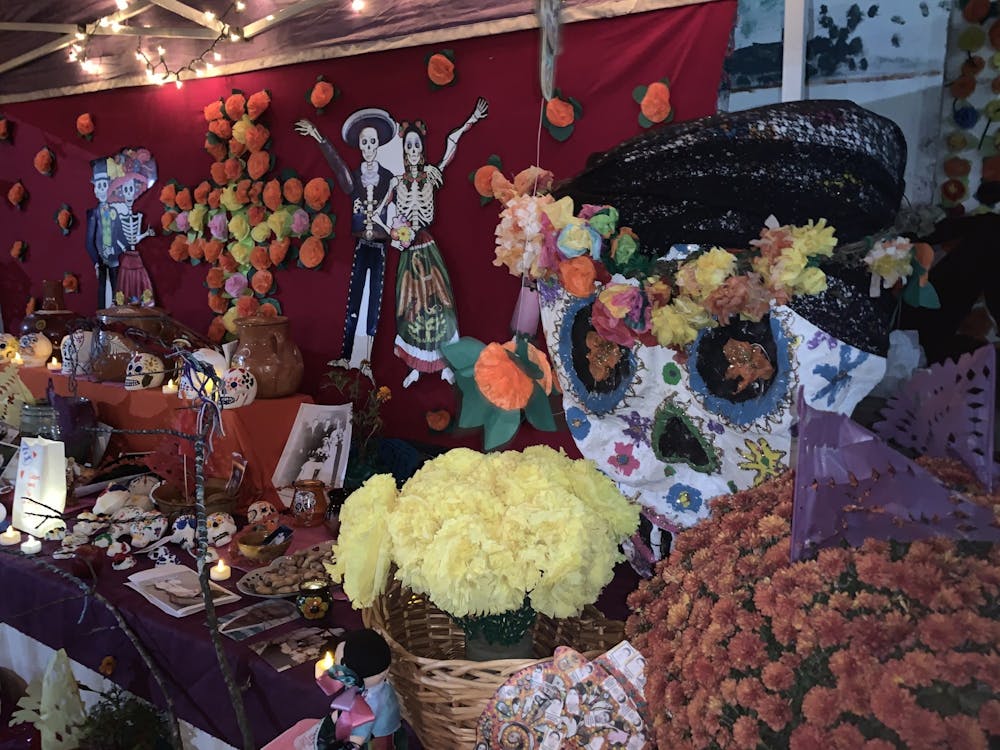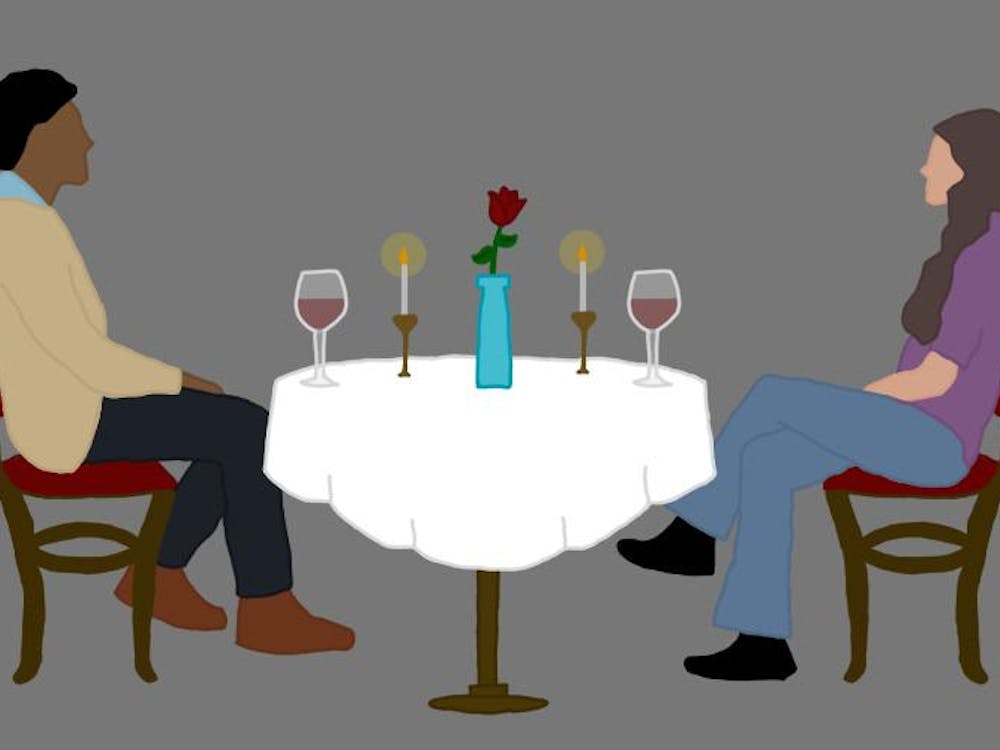Although it was dark outside, the IX Art Park was bright with music, chatter and colorful decorations Saturday night. Attendees added trinkets and remembrances to the two vibrant and heavily adorned altars dedicated to those who have passed away. Children played outside on the concrete patio of the park while parents socialized and paid their respects at each of the altars. The muffled sounds of music and chatter emanated from the interior venue located in the rear of the park, almost as if to welcome those into the culture that surrounds Día de Los Muertos, which translates to “Day of the Dead.”
Día de Los Muertos is a traditional Mexican holiday that honors those who have passed onto the next life with colorful altars and vibrant music. The Lua Project — a local Charlottesville folk music group — hosted its eighth annual Día de Los Muertos festival in collaboration with Sin Barreras, which is a local volunteer organization that aids the Latinx community with English tutoring and citizenship tests. The event served as a fundraiser for Sin Barreras, and all of the proceeds were reserved to support the services that the organization provides.
Betti Peñuela, Charlottesville local and participant in the Día de Los Muertos event, gave some particular insight into the importance of the altars and the long history of the holiday.
“For us, [Día de Los Muertos] is a very important event because we remember all of our loved ones that are no longer in Mexico and usually in Latin America,” Peñuela said. “Usually we make food that our ancestors liked and we put them on a colorful altar that has lots of flowers and aromas. Normally [the flower put on the altar] is the cempasúchil (marigold) which is a marvelous flower with a scent characteristic of Día de Los Muertos.”
The festival hosted roughly 200 visitors.The pleasant aromas of carne asada and cooked chicken floated throughout IX Art Park — a Mexican-style food truck was situated just outside of the venue. Additionally, next to one of the altars, pan de muerto — a sweet Mexican bread — was being shared among visitors.
This year, the Lua Project incorporated their “Mexilachian” style music — a fusion of music from Mexico, the Appalachian Mountains and the Atlantic Basin — into the traditional dances of Día de Los Muertos to create a welcoming atmosphere to those of different cultural descents.
Cassandra Mathis, Charlottesville resident and Lua volunteer, and Emily Rapavi, Curry graduate student and Lua volunteer, commented on the importance of celebrating Día de Los Muertos festival in Charlottesville.
“I love this holiday,” Mathis said. “It resonates with me because I’m from California, and I’ve been around Mexican culture for almost my whole life.”
However, the love for this holiday is not reserved to those who have descended from Mexican culture. Rapavi highlights that Día de Los Muertos can be seen as an event representative of Central American culture.
“I’m actually in the English as a Second Language master’s program at U.Va., and I’m also coming from the Guatemalan culture, so this day means a lot to me in remembering my ancestors,” Rapavi said. “I’m new to Charlottesville and was really excited to hear this being celebrated in the town and getting to know the community better.”
Día de Los Muertos is a holiday that is representative of cultural community building, as the “ofrendas,” or altars for offerings, were accessible to all participants. There were stations set up outside of the indoor venue at IX Art Park which encouraged participants to write messages to those who have passed and place them on the altars. These messages were written on white paper bags with electric tealight candles placed inside them.
Each altar was also adorned with paper flowers of different colors. Some traditional Mexican foods were also placed on the altars. There were also many photos of loved ones and religious items such as crucifixes and rosaries. Additionally, the altars held “calaveras” — colorful versions of skeletons that pay homage to those that have passed on.
The crowded interior venue at IX Art Park hosted a series of traditional dances — including a dance related to the Mexican legend of a wailing woman, La Llorona. Upon entering the venue, people were asked to donate to Sin Barreras. Estela Knott, primary spokesperson for the Lua Project and organizer of the festival, gave a speech that mixed both Spanish and English.
“Sin Barreras is very special to my heart because they’re doing the good work for our people — mi gente mi gente,” Knott said. “They come to work to support their families, just like we do, and this is a country of immigrants … And we all come from other places, we all need to understand that este país no puede crecer si no tenemos inmigrantes de otros países porque es grande este país.”
Knott utilized Spanish to describe a principal idea related to the development of the United States — “Este país …” means, “This country would have never come to be if we didn’t have immigrants from other countries because this country is so large.” Knott established the idea that the U.S. wouldn’t be what it is today without immigrants, such as those who are a part of the Latinx community.
After Knott’s short speech about Sin Barreras, the festivities continued with live music, a DJ and a dance floor. There was also a bar available to attendees over the age of 21. As the night progressed, families with younger children began heading home for the night. However, the celebrations were not halted due to the dwindling attendance and many continued to share the fun until the festivities came to a close at midnight.







